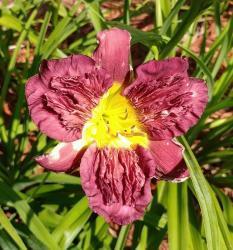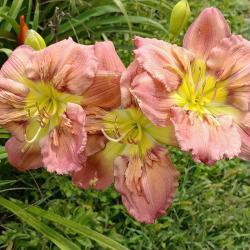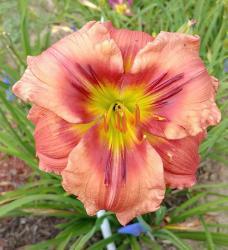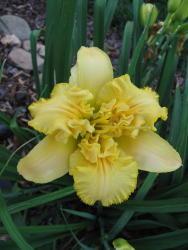Cpschult said:There is a rather large difference in opinion on the verbiage used with bearded daylilies. I don't really care either way I just wanted a central hub with information for people who were interested in the look like I was. I haven't been on the website in months.
I'm glad you have found the NGA website and consider it a "central hub" for information on Sculpted cristate forms. Another website you will find useful is the newly redone American Daylily Society (American Hemerocallis Society) website.
https://daylilies.org/
There is a lot of information on the pages all relating to daylilies including the official definitions for Sculpted forms, pleated, relief and cristate.
Cpschult said:On here sculpted cristate will get you more information than bearded will. Online bearded will lead you to Brad's crosses.
The reason you can find more information on NGA about Sculpted cristate forms is because we use the correct and accepted terminology.
Cpschult said:Brad Best has asked me to clarify that the "bearded" genetics are different than the "scultped cristate".
I've heard so many stories and ways of trying to justify the use of bearded to folks new to daylilies over the past 13 years.

Sculpted cristate is a Form based on the shape and structure of the flower. Form has nothing to do with genetics. For instance crispate and spatulate are two different types of Unusual form with different shape and structure, there is not one "genetic" line. I would also reread Maurice's post above.
In your list of cristates in the first post of this thread you missed parentage for some of the Tets you had listed and also left off a diploid.
Sculpted in Vermont is a diploid Sculpted cristate form.
Daylily (Hemerocallis 'Sculpted in Vermont')
On the Tet side...
Sigourney - Don't Touch Me There X Anatomy of Change
Love Never Ends - Outrageous Fortune X sdlg
Strikingly Dramattic - (Off Beat x Catcher in the Eye) x Gerda Brooker
Snarky - Straight Shooter x Fringing Coral Reef
Mr Tumnus - unknown unknown
Bonibrae Inner Demons - Bonibrae Jack Laundry x Forestlake Ragamuffin
Ohio Discovery - Unending Melody X Tet. Barbara Barnette
The interesting ones that relate to Tet. Barbara Mitchell are...
Tiki God - (Breed Apart x Momentum) X Be Thine
Kendra Marie - Women Seeking Men X Shores of Time
Unexpected Joy - Pink Debutante X Tet. Siloam Double Classic
Southport - Senegal x One Step Beyond
Witchy Woman - which also has Tet. Lavender Blue Baby through Heartbeat of Heaven - Heartbeat of Heaven X Bill Robinson
Now if you look at a new introduction Starched Petticoats it is also Heartbeat of Heaven X Mountain Radiation which goes to Tet. Barbara Mitchell. You need the link to Tom Keast's website to see this one
http://keastdaylilygardens.com...
As you can see there are other parentage combinations that produce cristation in daylilies as well as other shapes and placement for the cristation... even within the Lavender Blue Baby and Barbara Mitchell line.
Chris, I hope you continue to do your own research into the Sculpted cristate form and see your own sdlgs blooming some day. I think it is safe to say that the genes in certain cultivars/seedlings do play a role in producing cristation, but there are no genes that will produce a beard in daylilies.There is a lot to see and learn besides the self promoting line of Mr. Best.




